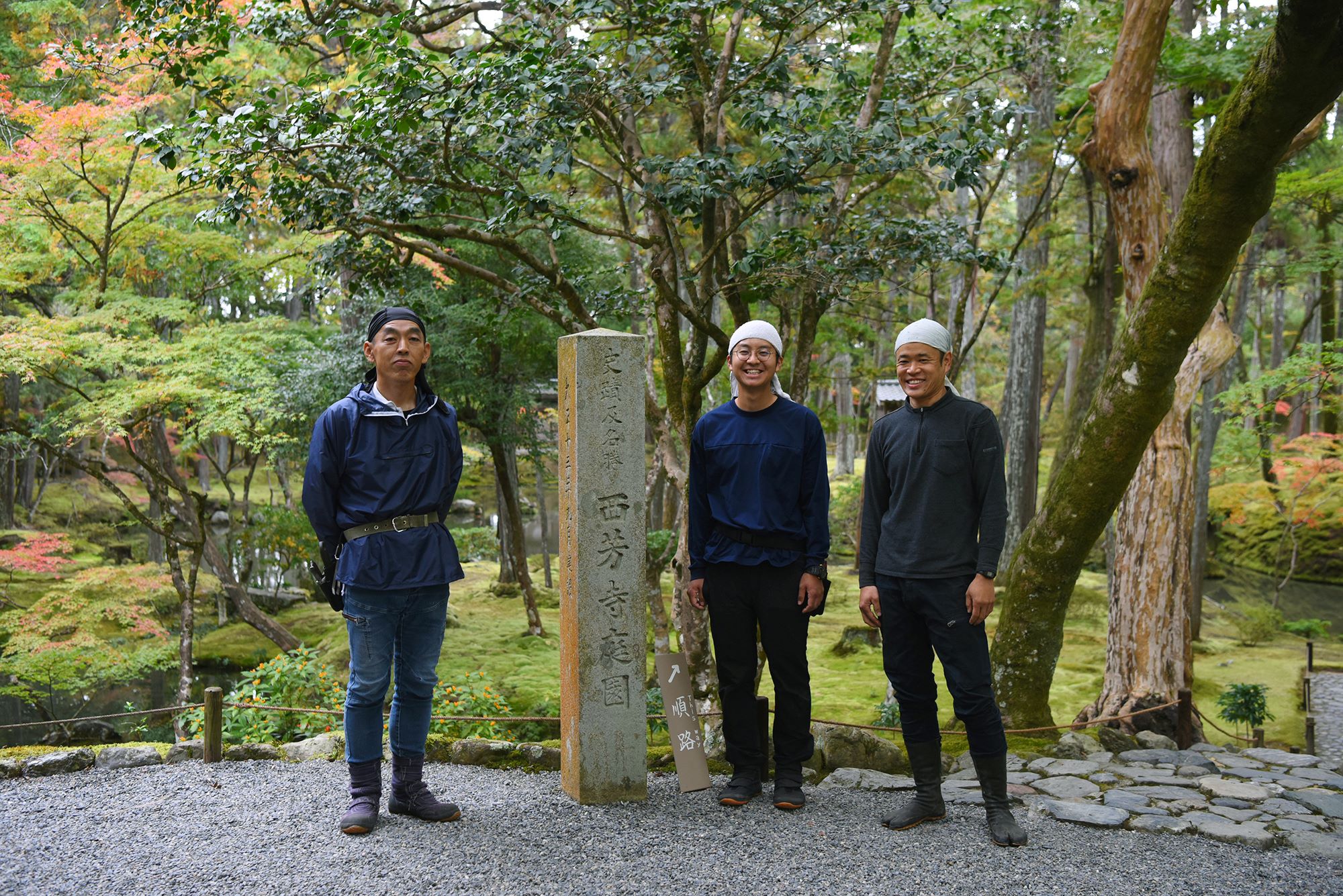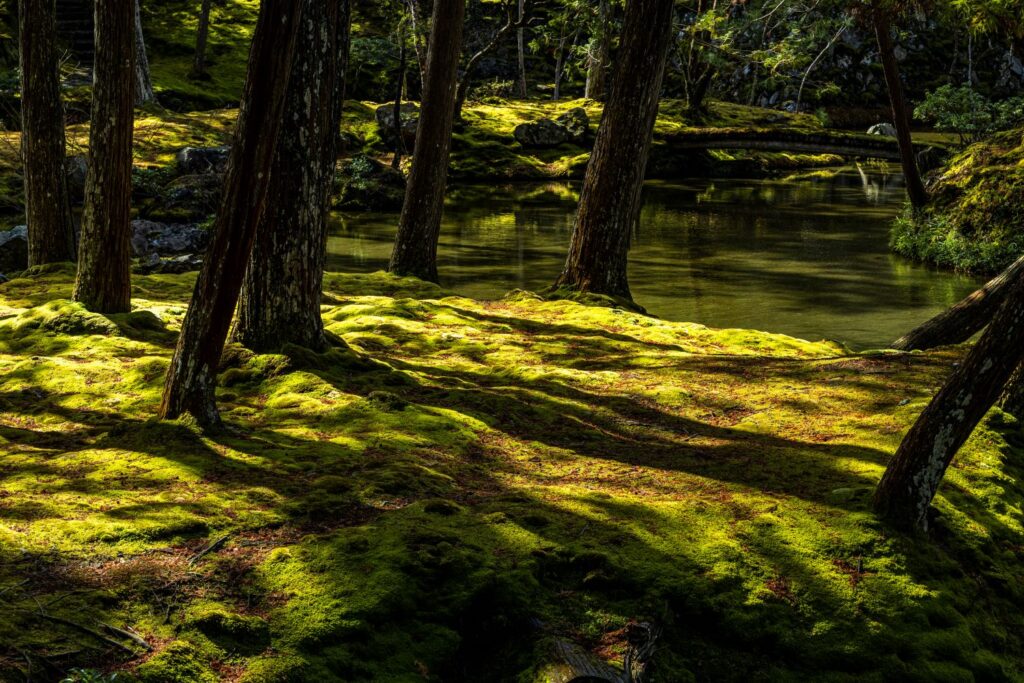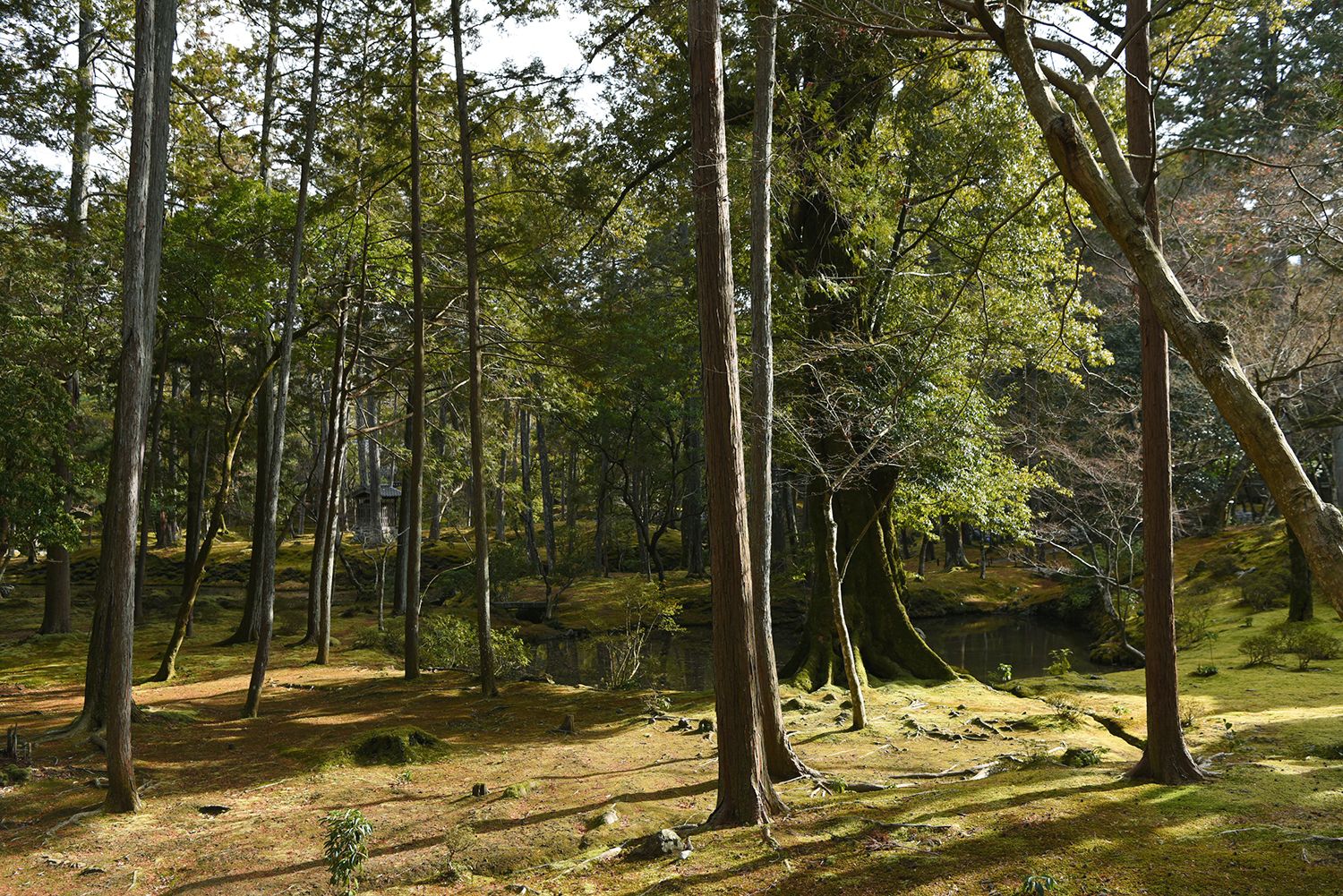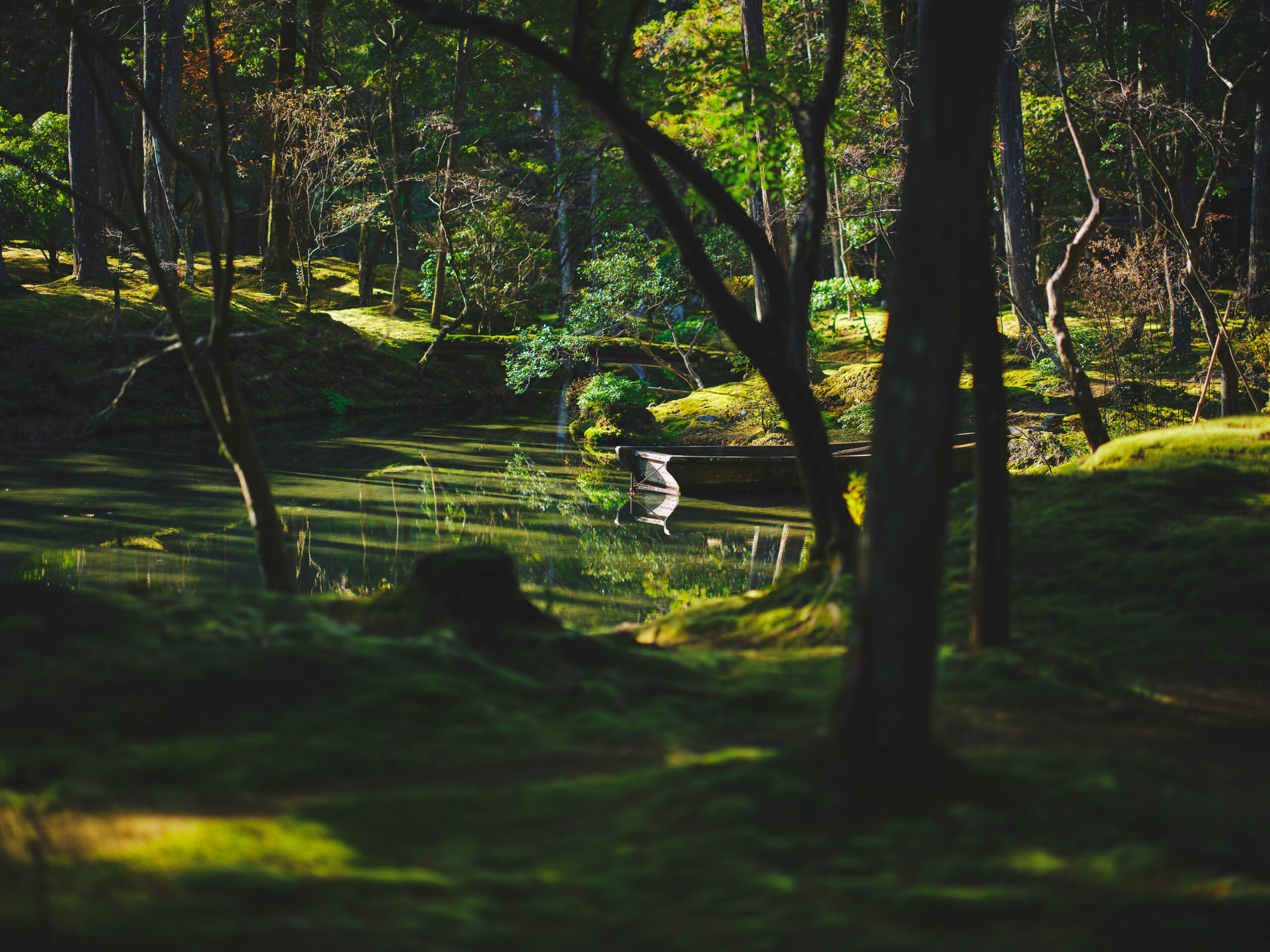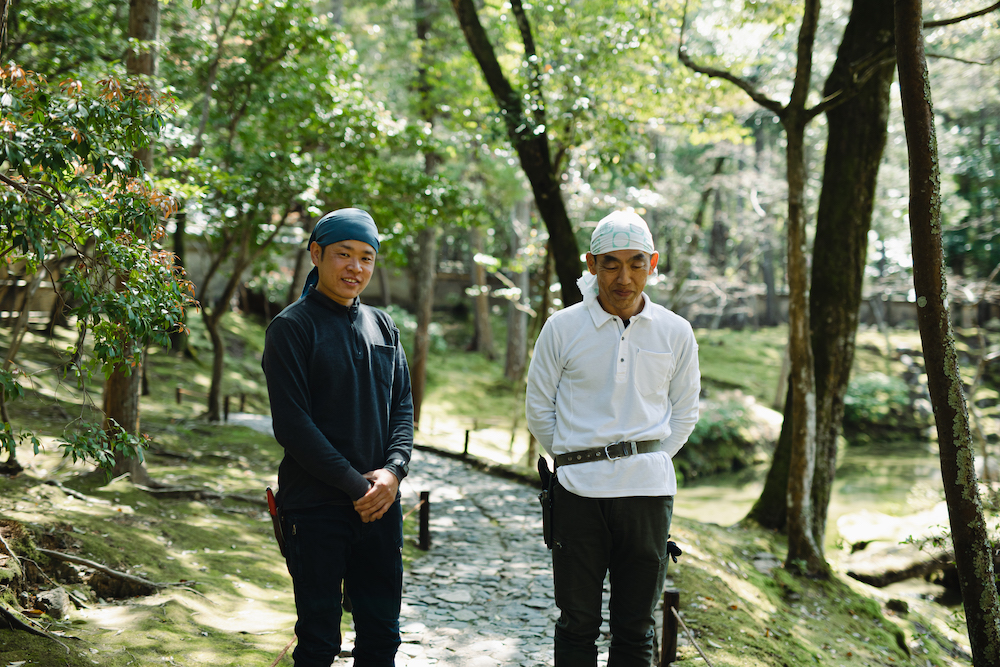2025.3.29
People Preserving Saihoji for Future Generations “Feal the Natural Chain of Events and Accompany the Lives of the Trees”
The Tree Doctor

Saihoji Temple is known worldwide for its “Moss Garden.” In order to welcome visitors each day, many people support the temple and its garden with their expert work. In this series, we spotlight the work of those involved in Saihoji, and we will explore what it means to support culture and connect to history.
For the sixth installment of this series, we spoke to Dr. Munezane Hisayoshi, an arborist. An arborist is a doctor that examines and treats damaged trees, protecting them and preventing them from succumbing to diseases. Dr. Munezane takes care of the trees at Saihoji. We caught up with him and asked him what he has learned through his work and whether there was anything interesting he noticed in his involvement with Saihoji.
Munezane Hisayoshi
Representative Director of Econet Munezane LLC. Hometown: Himeji City, Hyogo Prefecture. Born in 1949. After working for an electronic components manufacturer, Dr. Munezane became a certified arborist in 2007. In addition to diagnosing trees throughout Japan, he also holds lectures and training programs to educate future generations.
Revealing tree health
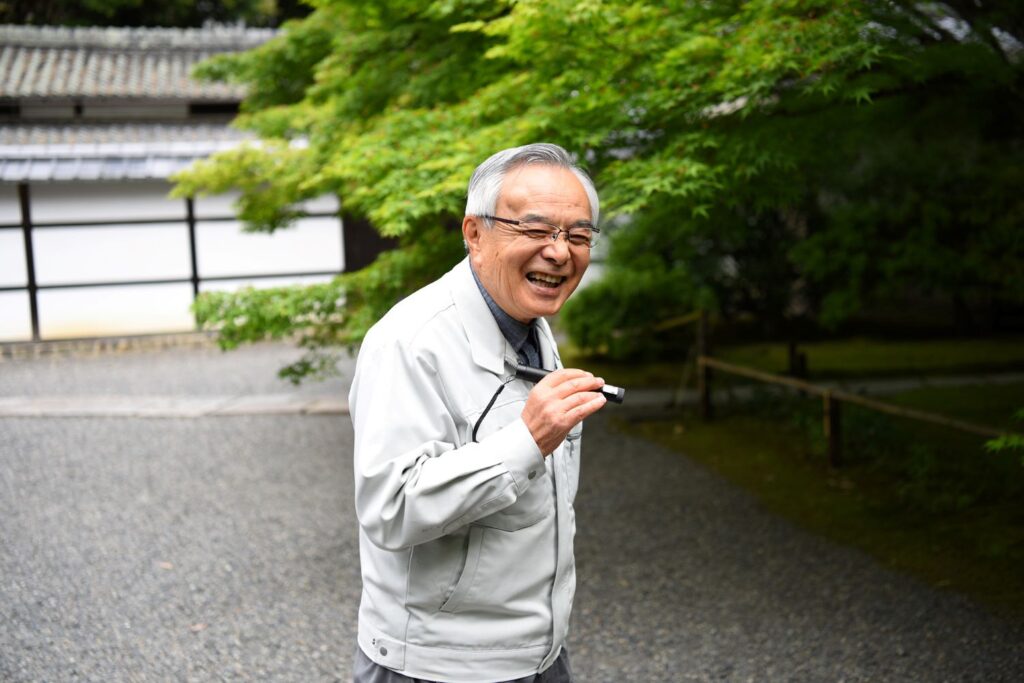
ー Please tell us about your background.
I originally worked for a local manufacturer of electronic components.
It was not until I was over 50 years old that I quit my job and began working to protect trees. During my last three years as a regular company employee, I studied under the arborist Dr. Nakajima. I did it on the side while continuing to work for my employer, and that is how I first stepped into this world.
I got certified as an arborist when I was 57, broadened the scope of my work and launched myself wholeheartedly into this new career.
ー Having come from a different industry, do you ever feel like your previous experiences come into play in your current line of work?
When it comes to electronics, every individual component can be traced back to where and when it was made. If something happens with a finished product, we can identify the origins of the components and stop the problems from spreading. This is called “traceability,” and I thought it could be applied to the work of arborists.
If a tree appears to be growing weaker, there is always something that caused it. If we could go backwards in time, we would be able to see when the changes started to emerge and make some educated guesses on what could have been the cause. That is why I keep a file detailing the progression of the treatments I give from the time I first diagnosed the trees to the present. It’s like a medical record for trees.
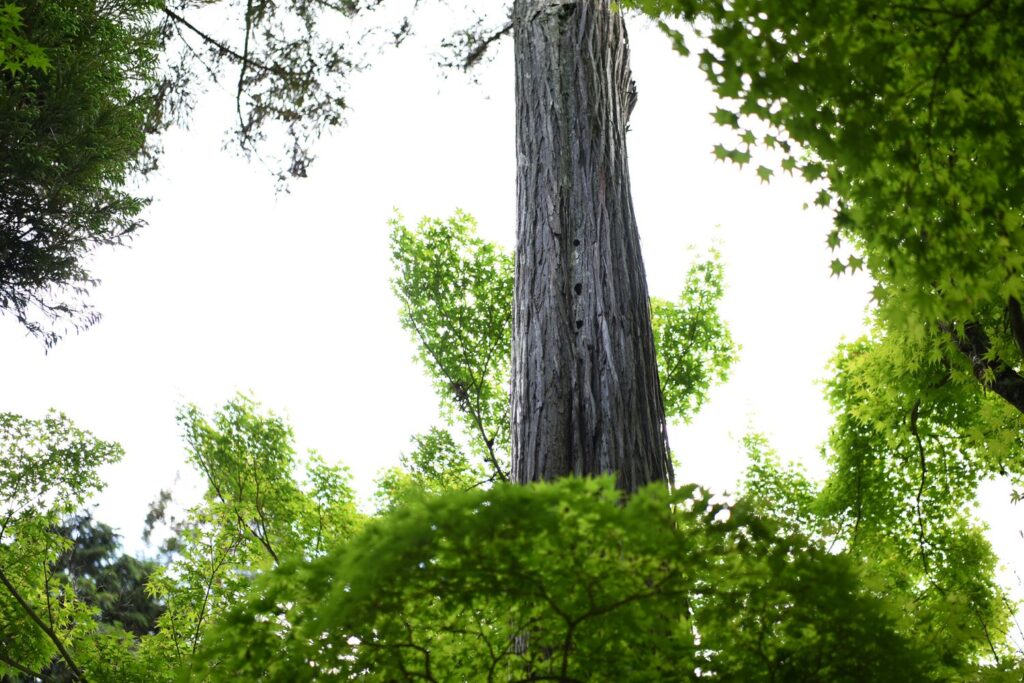
I put effort into making my records easy for anybody to understand. For example, I color code them, using red for trees that are in danger and yellow for those that require attention. I make follow-up appointments to observe the trees after treatment and keep the results as data. I suppose this approach reflects my background of having worked in manufacturing.
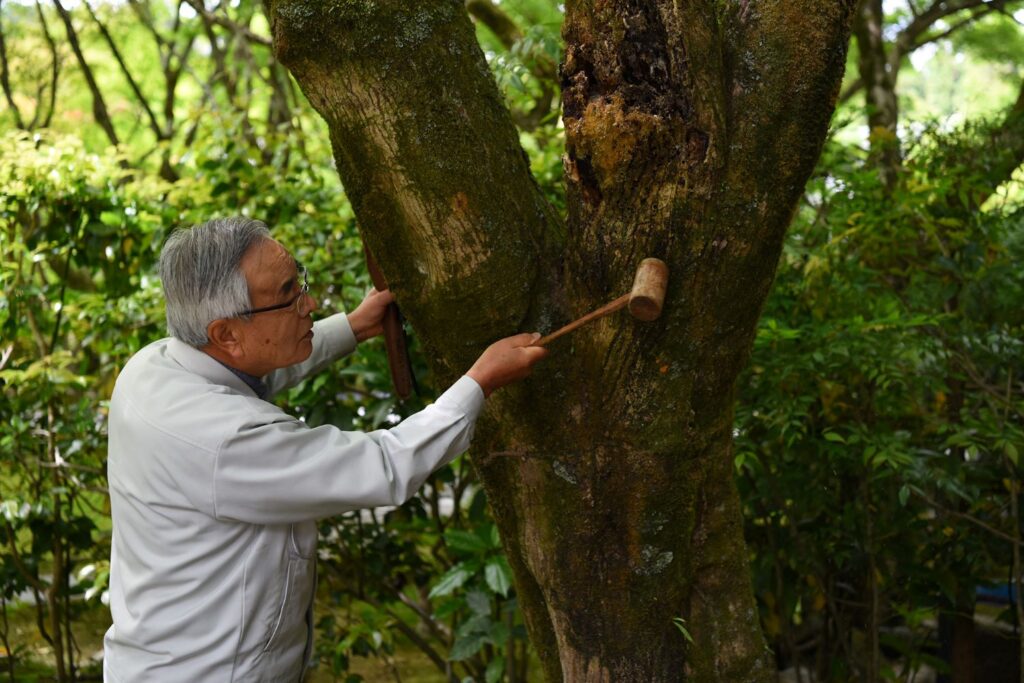
ー Tell us about something you are particularly careful about in your work.
I make sure not to overlook even the slightest detail.
For example, one day, when I was in the garden at Saihoji, I happened to notice a megarhyssa gloriosa wasp laying eggs. This type of wasp sticks its ovipositor (its egg-laying tube) into trees to lay its eggs on the larvae of another type of wasp called the tremex apicalis, and we know that the tremex apicalis is a carrier of a type of fungus that causes trees to rot. If I hadn’t seen that one wasp laying its eggs, that tree might have died.
In this way, I try to read the natural chain of events and predict dangers from observations that otherwise seem completely random.
Supporting the will to live
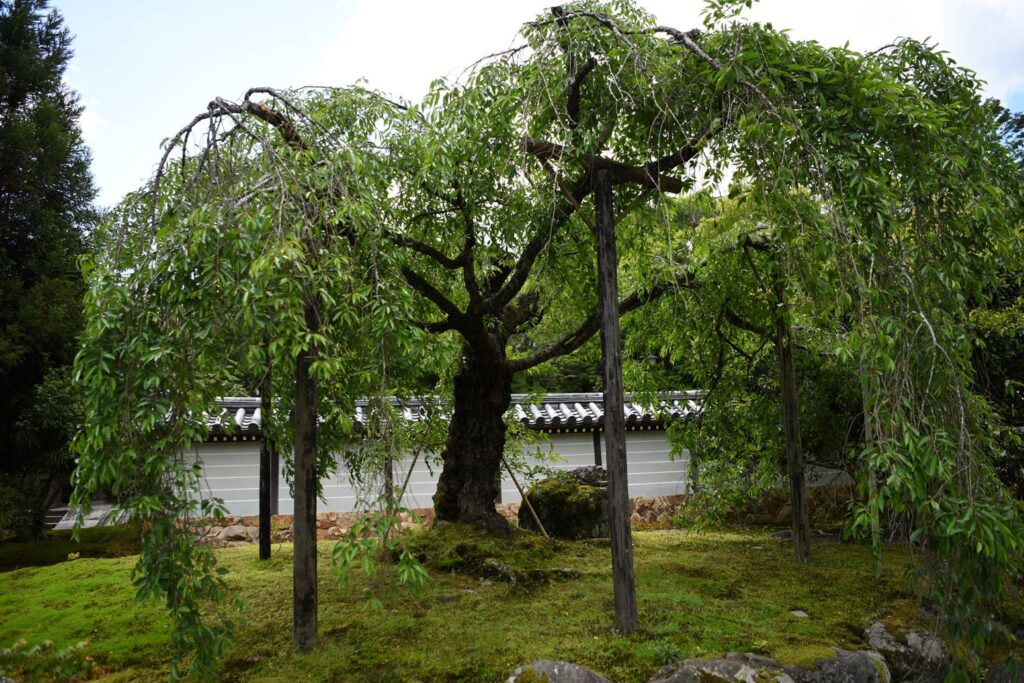
ー Please tell us about how you ended up being involved in Saihoji?
It was about eight years ago, in the summer, when the temple first contacted me. The weeping cherry tree in front of the main hall was not doing well, and they wanted someone to come and examine it.
When I arrived at the temple, I immediately noticed the weeping cherry tree. The leaves were lush, and at first glance, it seemed healthy. But when I got closer, I found that the trunk had withered, most of the branches were missing.
ー What was the cause?
After much investigation, I found that there was a problem with the soil. The tree had been planted in a large flowerpot-like area piled with hard stones, and the growing roots could no longer fit.
The weeping cherry is one of the most difficult trees to treat. If the symptoms continue to progress, it will only decline further and eventually die.
But then, when I examined the roots of the tree, I found some young shoots growing from the roots themselves. These are called hikobae, and people sometimes describe them as “unwanted branches,” but when a tree is weak, they grow to absorb as many nutrients as possible from the root. In other words, they were a sign that this weeping cherry tree had a strong will to live.
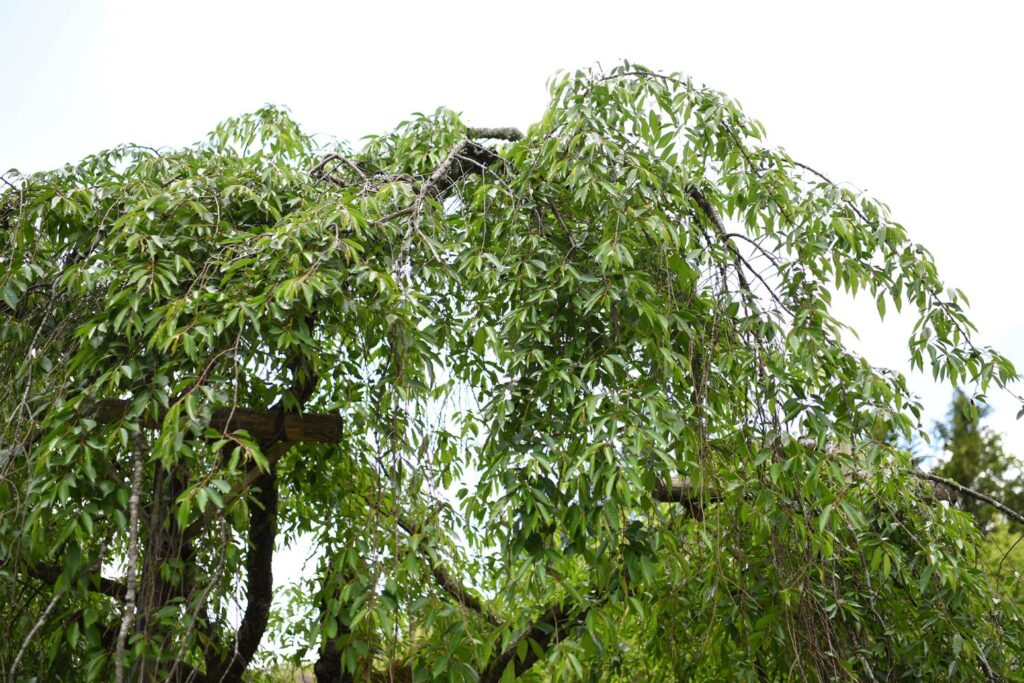
ー How did the treatment proceed?
The tree has these great big branches that extend laterally, with smaller, vertically growing branches extending from them. The effects of the treatment first became noticeable in these vertical branches. As the tree recovered, the branches grew and filled up all the empty spaces.
After two years, flowers began to bloom from these branches, and evidence of the tree’s recovery became visible all over the place. When you arrive at Saihoji, you can see the weeping cherry tree from outside the temple walls. Whenever I come to the temple, one of my favorite things to do is to observe how the tree has grown.
Human existence is said to date back a few million years, while trees have supposedly been around for around 385 million years. In other words, they’re our seniors by far, and perhaps it’s a bit presumptuous of human beings to think that we can do something for them, but to give just a little boost and support their will to live—that’s the Saihoji approach. I grew close to the weeping cherry tree in this way, and it’s now one of my favorite trees in Saihoji.
This very moment today is the best time
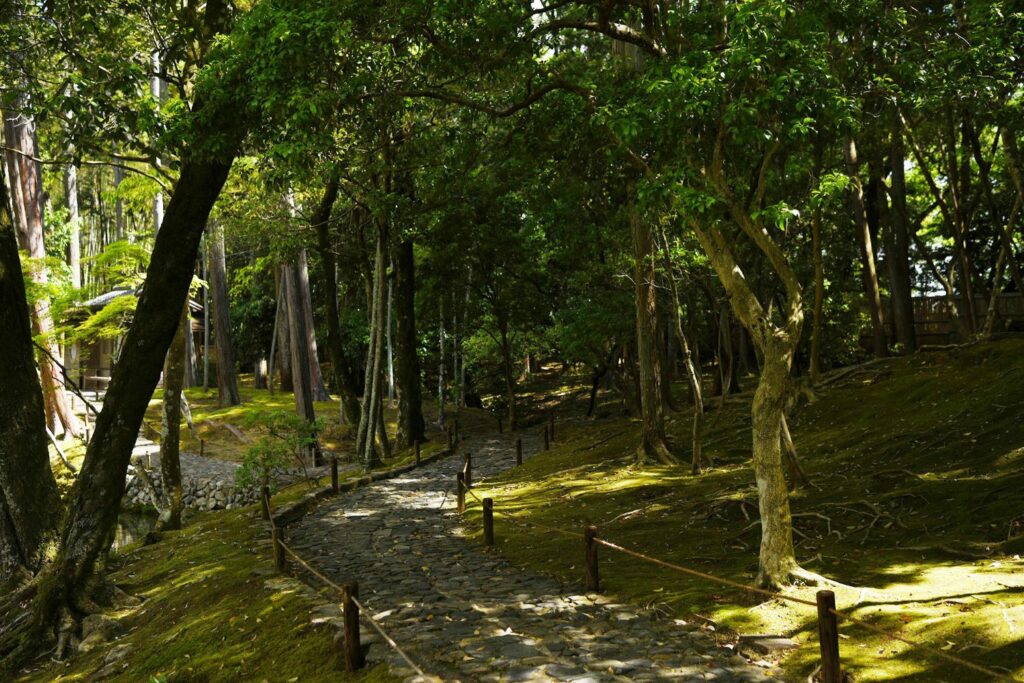
ー What was your impression when you first came to Saihoji.
The first time I came to Saihoji was when I examined the weeping cherry tree. I took a walk around the garden afterwards and found that the trees were larger than in other gardens. I felt that the garden was managed in a natural way.
These trees might be elegant and beautiful to look at, but I noticed a few trees where I felt that someone needed to keep an eye on them. What would happen if the wind blew? Would a branch fall? What if it hits and injures a visitor? I couldn’t help but worry about it. There is something wonderfully appealing about keeping things natural, but you have to draw the line somewhere. I spoke with everyone at the temple so we could align how we understood the situation, and then we went about making improvements.
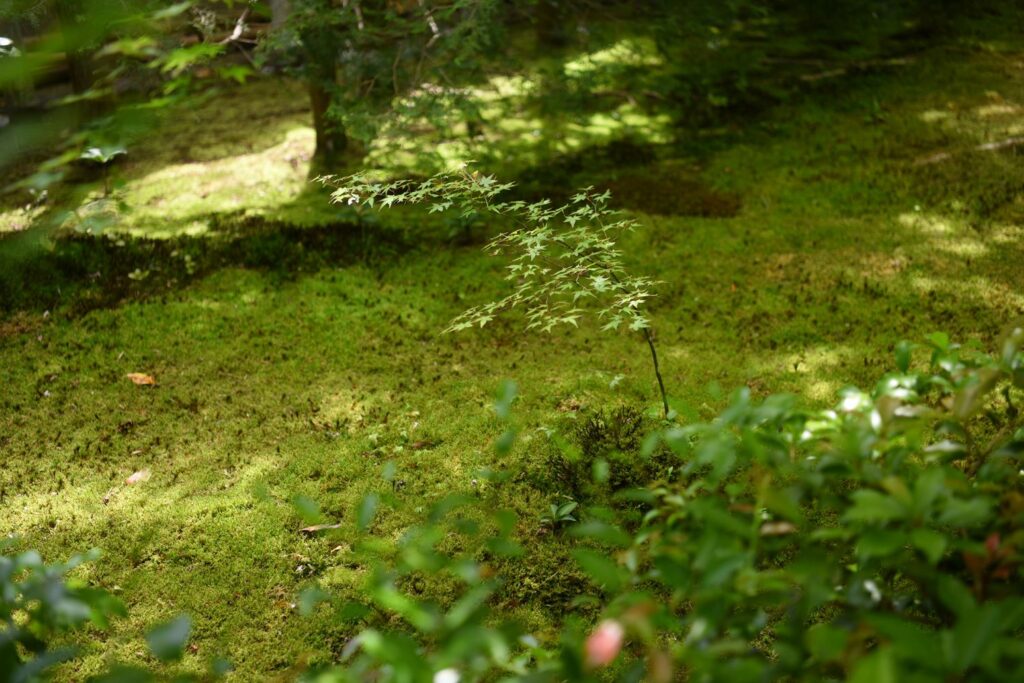
I now come to Saihoji about three or four times a year for checkups, and the trees have improved dramatically over the past few years. The garden is designed and maintained to welcome visitors, and when I visit, I can feel myself being drawn into the garden.
ー What appeals to you about the garden at Saihoji?
There are some things that change and others that stay the same, and they harmonize with each other nicely.
The trees and the surface of the water change from day to day, while the heavy stones and rocks remain steadfast and unmoving. The moss fills the gaps between these different elements, smoothing out the ground.
The individual trees, all varying in size and species, come together to form a beautiful garden. If only we could do the same in the human world. If we could all accept each other in our multifarious individuality. It makes you imagine what it would be like to have such an ideal human society.
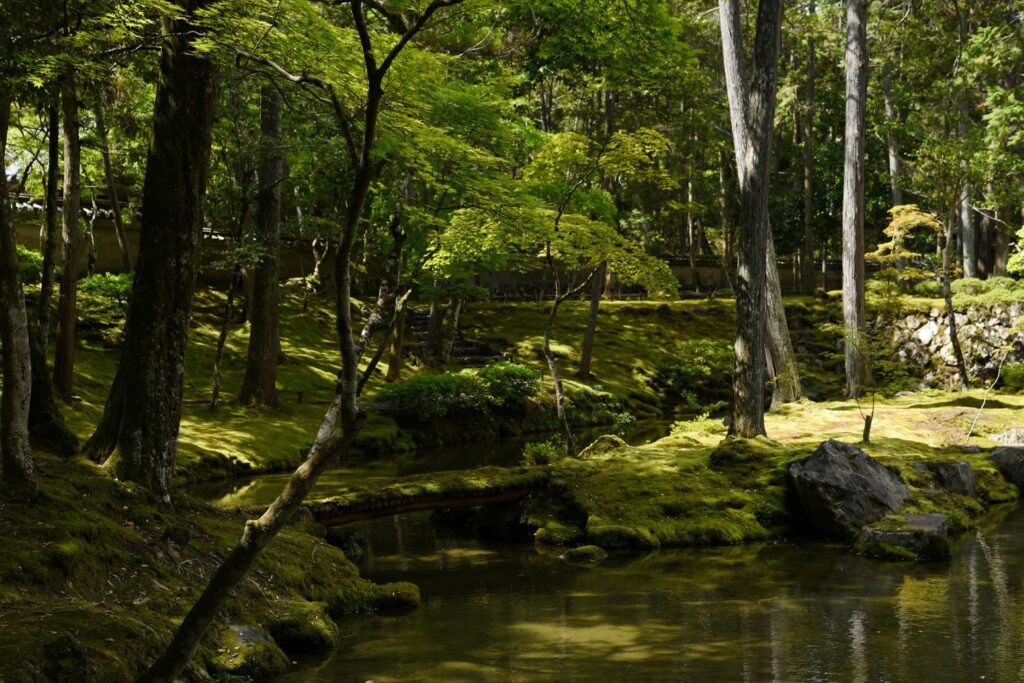
ー What is the best time of year to visit the garden?
People who come here sometimes ask me the same question, and I answer, “This very moment today is the best time.”
I try to come to the temple on days with clear weather, to make it easier for me to examine the trees, but one time when I came, I got caught in pouring rain. Then, like a string of tiny pearls, water droplets fell in lines from between the moss, and the sound of the dripping droplets created a beautiful sound like a harp. I had the privilege of enjoying a beautiful manifestation of nature, all around the garden, that I would not have seen on a sunny day.
And there was a time when, early one winter morning, frozen water droplets were encrusted on the moss like glasswork. I decided to take another look before I went home, but when I circled back around the garden, it was gone. I believe that the garden gives the best it has to offer, right then and there in each individual moment.
I firmly believe in the importance of “not overlooking the slightest detail,” and I hope that other visitors to the garden will share this view.
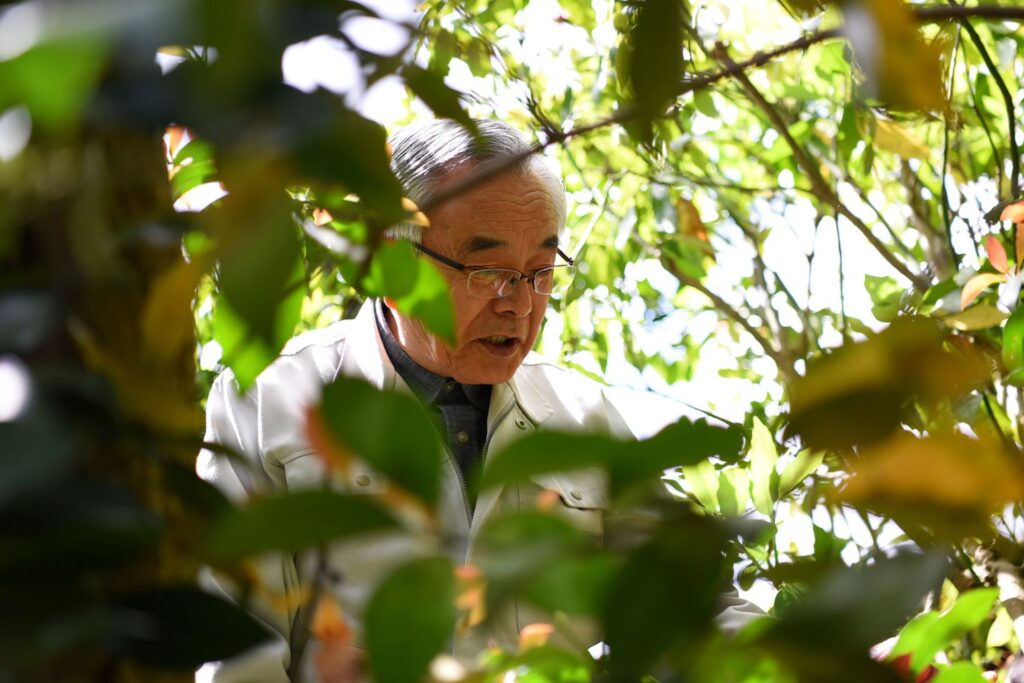
ー Finally, please tell us what you consider to be important in order to carry the garden at Saihoji into the future.
We who live in the present must stay conscious of the responsibility we bear to pass the garden on to future generations and take care of the garden with this responsibility in mind. For example, when I write diagnostic certificates of the trees I examine, I make sure to write them in a way that is easy for anybody to understand. After all, one day I will have to pass on the baton to the next generation, and if I am the only person who can understand these diagnostic certificates, then they cannot serve as a link to the future.
There was once a mountain cherry tree in the garden that was not doing well, but before it died, it blossomed and dropped seeds to sprout new life. Some trees, like the weeping cherry tree we spoke about, are doing all they can to survive. The garden at Saihoji is filled with these ways of life of the trees. I would be glad if you could have the chance to come here and observe the way these trees live their lives.
Edited by: MIYAUCHI Toshiki, HOSOTANI Kana
Written by: OGURO Keitaro
Photographed by: MOCHIZUKI Sayaka
*These photos were with permission.


